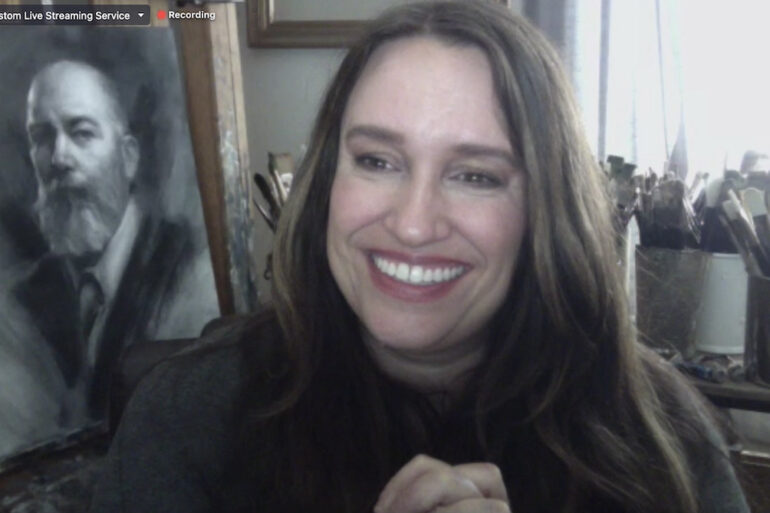
This post is also available in:


Michelle Dunaway’s engaging smile, accompanied participants on the second day of the workshop at The Art of The Portrait, the Portrait Society of America’s annual convention, now in its 23rd year.
The theme proposed by the artist was: “Painting the Portrait” a title chosen not by chance since its drafting, carried out with big brushes, accompanied Dunaway’s gestures, in a charcoal portrait, as if she were working on an oil painting.
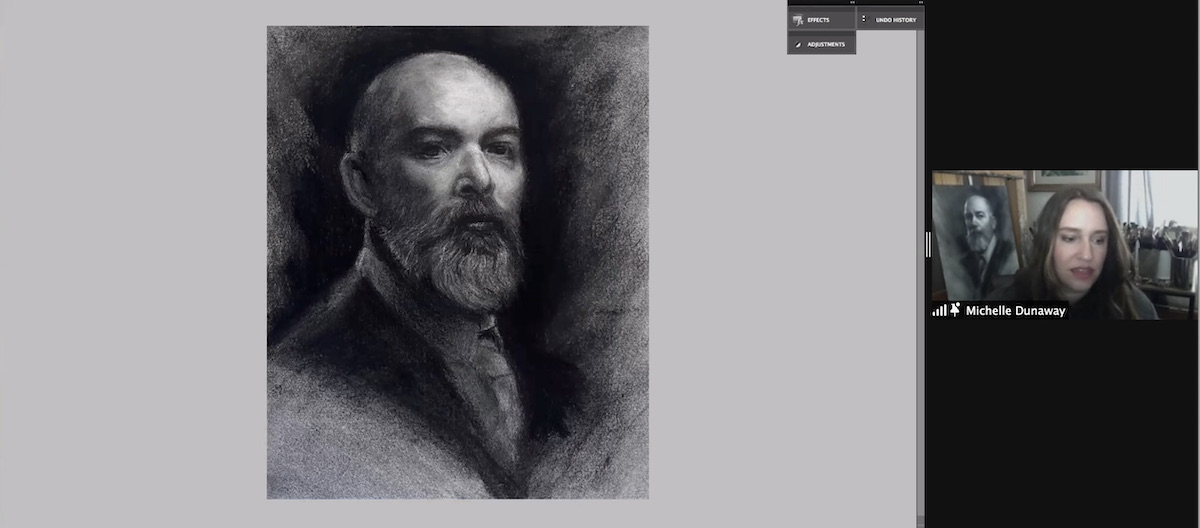
The type of charcoal used for the demo was predominantly vine charcoal, powdered charcoal sometimes thickened and spread like a watercolor with water added to darken it further, and charcoal in very soft pencil, a 6B.
The artist began the portrait by darkening the sheet of watercolor paper: in this regard, she reiterated the importance of using a paper suitable for this method of drafting, capable of holding the charcoal and defining its texture.
Charcoal that she then “lifted” little by little in a continuous “push and pull it back” making the lights emerge.
It is very fascinating to think how this medium, the oldest and poorest in the world, which dates back to the time of the discovery of fire and which was once relegated to a complementary element in drawing, is nowadays considered a technique in its own right.
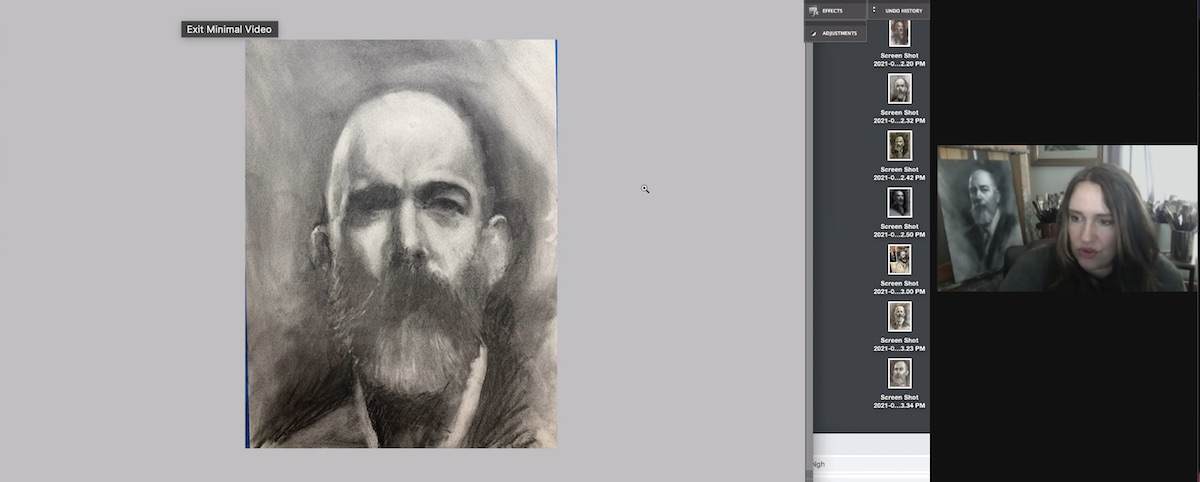
With the spindle and compressed charcoal – a medium that the artist uses in a second moment and exclusively because of its dimensions suitable for the drafting of large strokes – Dunaway is able to outline the dark masses working on strokes of light created with the brush and powdered charcoal, building in this way the background and the three-dimensionality of the subject.
To the drawing of the charcoal powder with the big brush she alternates hard and incisive strokes with the brush of which she removes the surplus with the blow and then proceeds. Powdered charcoal, although dirty and sometimes difficult to handle, offers great effectiveness in the rendering of the portrait, especially in the background, which is not left to the initial phase but proceeds with the evolution of the face and its anatomy through the lights, shadows and chiaroscuro obtained also thanks to the use of rubber, offering in this way great vibration in the composition of the work.
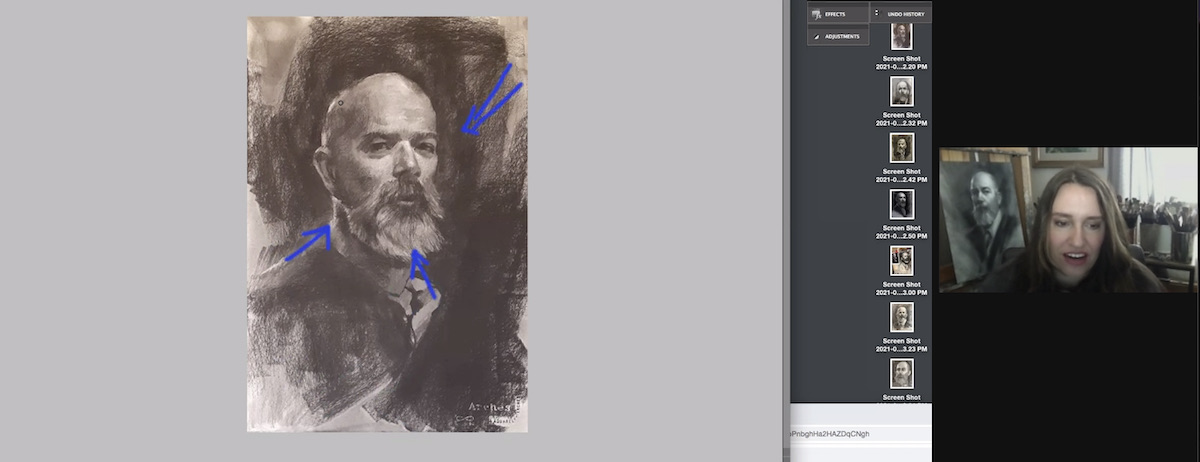
In recounting the process of construction, Dunaway argues that it is fundamental to “consider anatomy as the notes of a piano: it is not necessary to know them by heart but to be able to identify them, because: “there is no age or sex that disregards anatomy”.
This will avoid being overwhelmed by negativity and discouragement about which she suggests not to be paralyzed with what we don’t know: “Believe in your power of observation,” says the artist. “When disappointment takes over you need to get out in the fresh air and be inspired by nature by remembering what inspired us to become artists,” a concept Dunaway reiterated several times throughout the day.
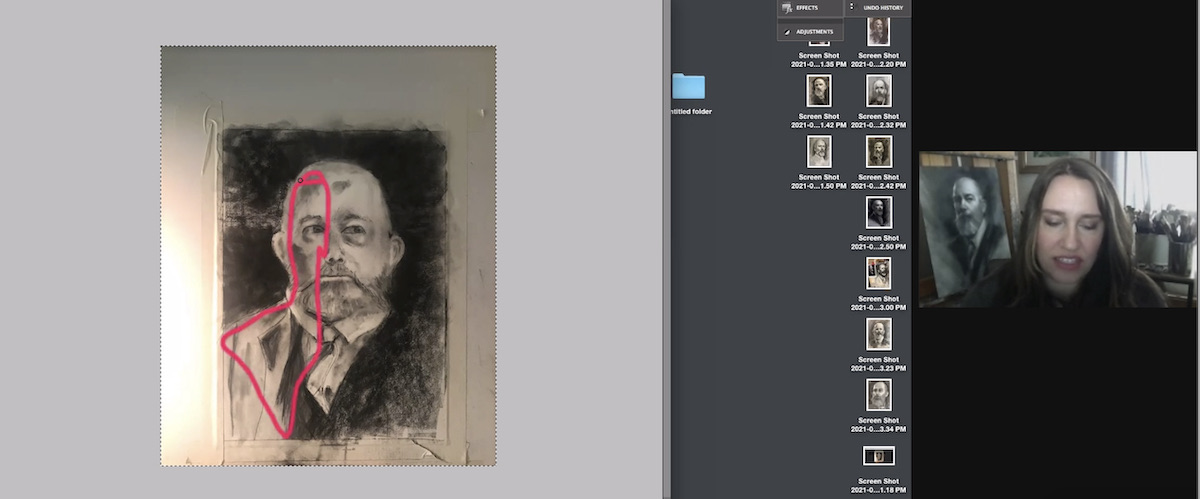
Inevitable reference to her mentor, the great artist Richard Schmid who died two weeks ago, of whom she recalled a recurring phrase: “when you observe something you make it your own, you learn it and you put it into your work”.
While talking about Richard Schmid, Dunaway is unable to contain her emotion as she remembers her last interview, done by herself and in the company of his inseparable wife Nancy, last year on the occasion of the XXII convention of The Art of The Portrait. On that note, to pay tribute to the great American artist, tomorrow at 7:00 PM ET, there will be a special rebroadcast (rebroadcast) for conference attendees, viewable globally Sunday at 4:30 PM ET on Facebook, on the Portrait Society of America page. Remembering to squint at an appropriate distance to focus on the values of the charcoal portrait, other fundamental concepts were taught during the workshop: the importance of the concept of rhythm in art and portraiture -that is, how one shape intersects with another shape- and the artist’s focus, that is, his/her choice to highlight one part of the composition while balancing the rest in harmony.
“Rhythm especially misleads the artist many times, who thinks he/she’s got the drawing wrong but actually gets the rhythm wrong,” says Dunaway.
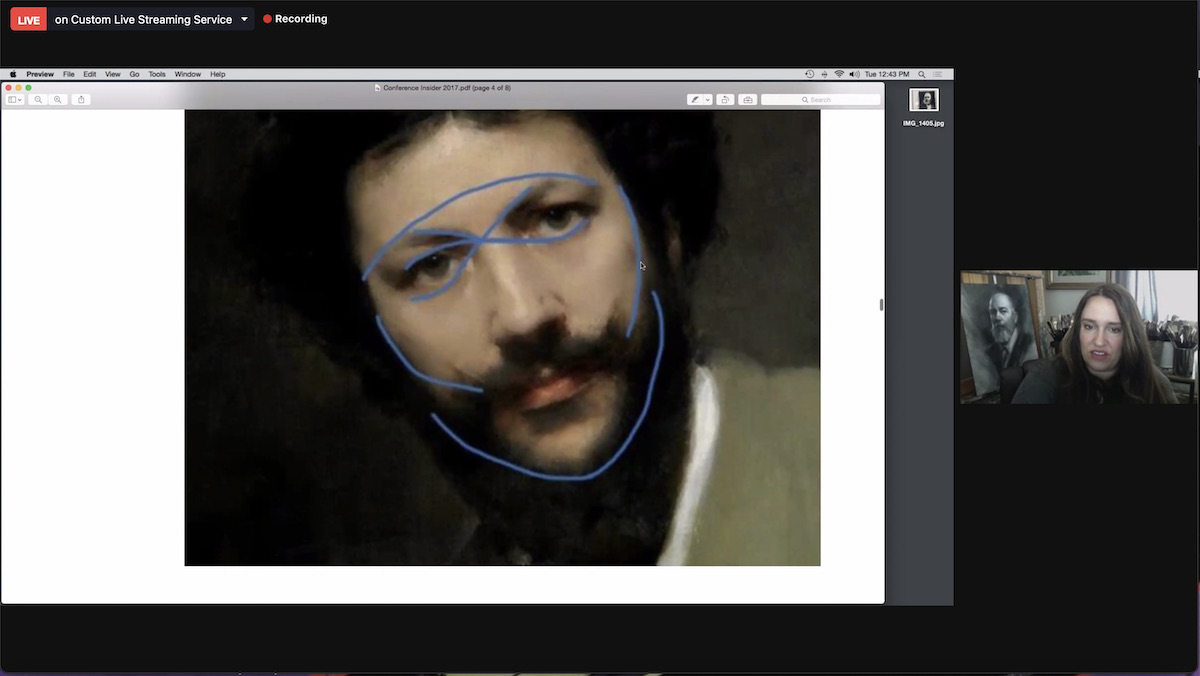
The enthusiasm of the attendees was heartfelt not only because they enjoyed the lecture by Michelle Dunaway who is known and honored with countless awards. What aroused the emotion of the participants was the artist’s gesture in handling the charcoal as if it were oil with her bold brushstroke, but at the same time sensitive to emotions. The audience also appreciated her ability to communicate during the critique session, which was considered fundamental by all those present and they thanked her very heartily. A gift not to be underestimated.
While the day ends we wait for the third workshop day tomorrow in the Alicia Ponzio’s company.
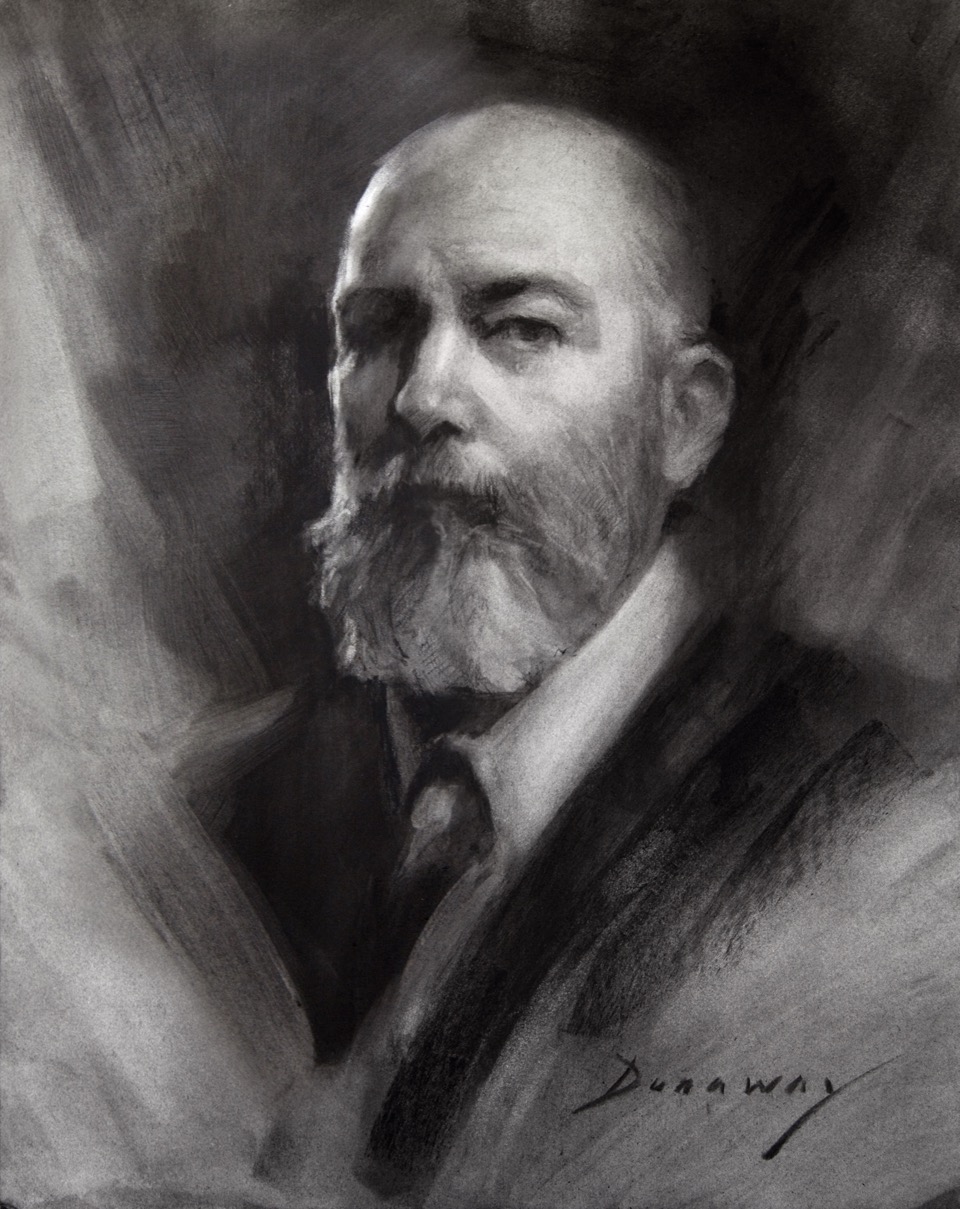
.
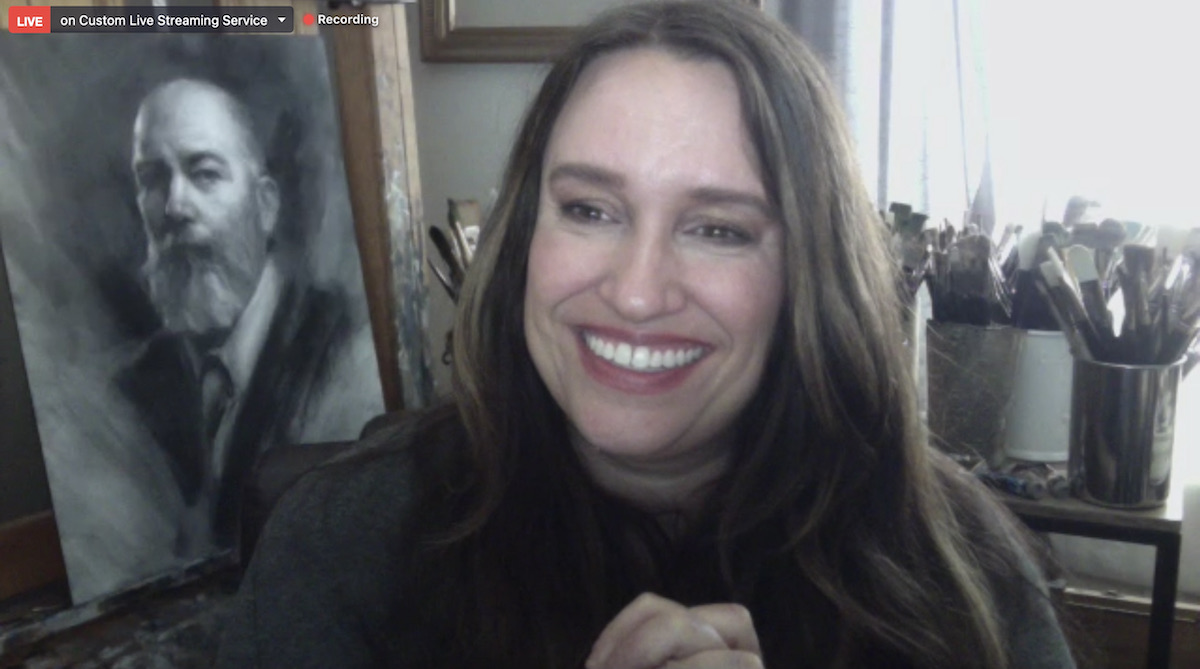
(on the title: Michelle Dunaway and her final portrait)
